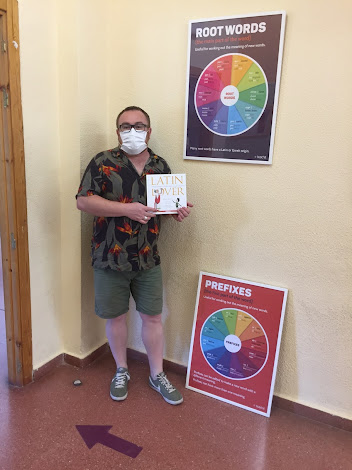LEARNING OUTDOORS ART PROJECT
CONTENT AREA: ARTS
& CRAFTS
ART TEACHER: Ana Lasso
LANGUAGE ASSISTANT: Justin Calleja
THE PROJECT
Both ideas inspired me to design a project to work with the inductive method of learning and teaching, in contact with Nature and developing cooperative work between both teachers and students.
TEACHING OBJECTIVES
- Stimulate integration through
teamwork activities
- Promote respect for nature
- Encourage healthy attitudes
- Encourage interest in
systematic observation of the environment
- High level of creativity and
flexibility
- Develop fellowship and
communication among students
- Foster imagination, creativity,
and emotional intelligence
- Develop curiosity to discover
the artistic possibilities offered by the environment.
- Develop positive ethical values
like equality, collaboration, help and reject any discrimination.
Arts is an area with clear procedural importance; thus concepts, procedures, and attitudes are fully connected. All theories are related to the practice. The method offers a little theoretical approach that leads the student to discover intuitively. In addition, it lets them enjoy their natural, cultural and social environment.
ACTIVITIES
Textures
This activity consists of 2 parts:
First: Teamwork to find natural/artificial textures in the open air (secondary school and surroundings) and taking pictures of them. Then, make a virtual catalog to send the teacher.
Second: Translating textures into drawings using hatchings with straight lines, curved lines, and cross-hatching. Each texture must be labeled with its name (material) and adjective to describe it.


Figure and background
The exercise consists of making a picture with two parts:
- Figure or foreground: image/s
of student jumping
- Background: shapes, textures,
words, and colors to express their dreams.
The topic of dreams is for students to express messages about their passions, future ideas, hopes, and imagination.
Free technique: marker pens, color pencils, watercolors, and
other coloring materials.
Observational drawing
This activity consists of being creative, making a sketchbook to draw everyday objects. The idea is to create this little notebook made of observational drawings by the students. The student should quickly draw things around that catch their attention. They can do this in an open space outdoors, such as the playground, the garden, the street, the patio, etc.
Secondly, the student will draw the pictures by looking around
different and simple everyday objects. It is not about being super
realistic - the main goal is to get an idea. Afterwards, their drawings can be
designed with lines, textures, details, and overlapping figures at home.
Finally, the student should re-do the two favorite images in her/his artbook (the bigger one) using watercolors.
Basic camera shots and
angles
In this activity, the students should use the camera to catch the surroundings using different camera angles. They should be able to try to express emotions depending on the shot or angle. They must know in advance the types and the meaning of the angles.
Land art is a type of art made directly in the landscape by sculpting or making structures and drawings with natural materials such as stones, leaves, branches, water, grass, etc.
Richard Long is one of the main land art artists.
Exercise: Students will be in groups, and they will be making a realistic
sculpture using natural elements.
Body geometry
This is a teamwork activity in which the students have to do a geometric shape using their bodies. They will be doing a lot of different shape positions with their bodies. The students must agree on the exact structure they want to make together. The figures they make should be easily recognizable as geometric or polygonal shapes.






































Comentarios
Publicar un comentario